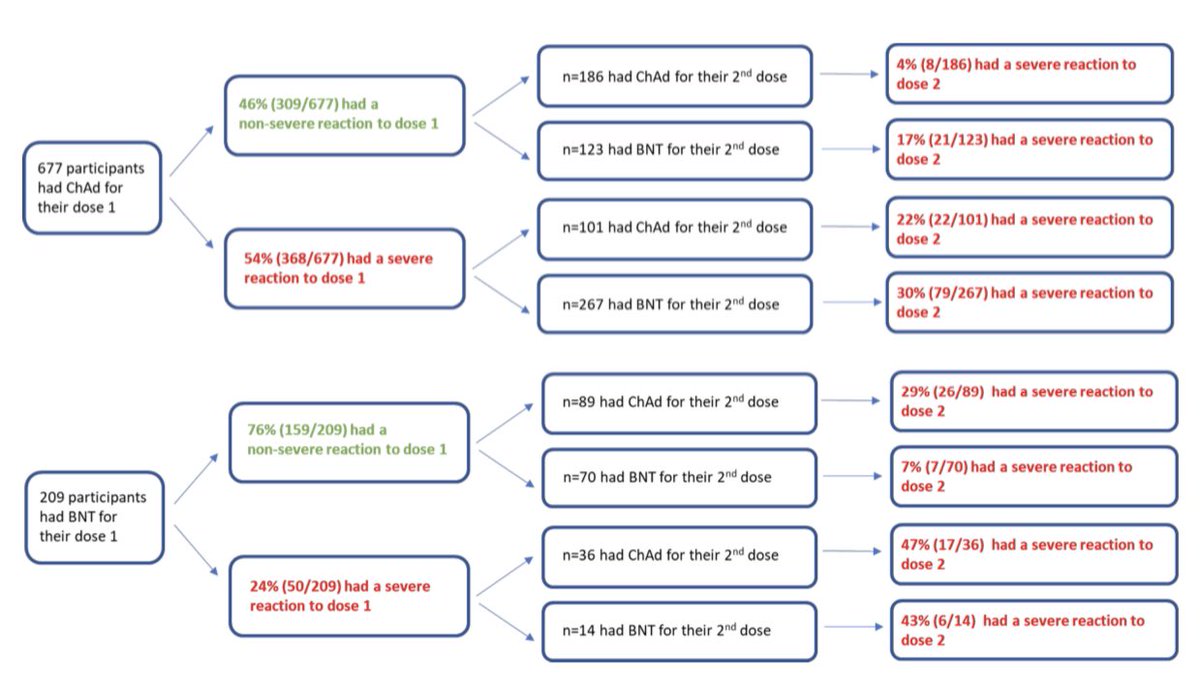1/5 Both Pfizer & AZ vaccines are highly protective against severe #COVID19, especially after 2 doses.
Here’s why it’s better to stick to the same vaccine brand for both #COVID19 vaccine doses even after severe reaction following the 1st dose 🧵
👉 papers.ssrn.com/sol3/papers.cf…
Here’s why it’s better to stick to the same vaccine brand for both #COVID19 vaccine doses even after severe reaction following the 1st dose 🧵
👉 papers.ssrn.com/sol3/papers.cf…

2/5 Compared to 2 doses of the same vaccine brand, mixing Pfizer/AZ vaccines was associated with higher rates of severe reactions & requiring medical attention after the 2nd dose: esp. in younger adults, in women & in those with previous #COVID19 🧵
👉papers.ssrn.com/sol3/papers.cf…
👉papers.ssrn.com/sol3/papers.cf…

3/5 Adults who had a severe reaction after their 1st dose of #COVID19 were more likely to have a severe reaction after 2nd dose, whichever vaccine they received, but risk of severe reactions increased if 2 different vaccine (AZ/Pfizer) brands given 🧵
👉 papers.ssrn.com/sol3/papers.cf…
👉 papers.ssrn.com/sol3/papers.cf…

4/5 Adults who did not have a severe reaction after their 1st dose of Pfizer or AZ vaccine but had a different brand of vaccine for their 2nd dose were more likely to have a severe reaction (including requiring medical attention) after the 2nd dose 🧵
👉 papers.ssrn.com/sol3/papers.cf…
👉 papers.ssrn.com/sol3/papers.cf…

5/5 Moral of the study: stick it to same #COVID19 vaccine brand for both your vaccine doses unless you have a clear clinical contra-indication (e.g. anaphylaxis) against the vaccine brand that you received for your 1st dose (@kallmemeg another 🧵!)
👉 papers.ssrn.com/sol3/papers.cf…
👉 papers.ssrn.com/sol3/papers.cf…

• • •
Missing some Tweet in this thread? You can try to
force a refresh









